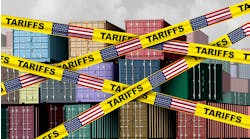Last week, the U.S. Supreme Court issued its decision that the Environmental Protection Agency exceeded its authority under the Clean Air Act in its attempt to regulate greenhouse gas emissions from power plants.
While the immediate impact of the decision in West Virginia v. Environmental Protection Agency is fairly limited, the court’s rationale has the potential to impact federal agency authority across a broad range of sectors.
The West Virginia case involved a challenge to the Obama administration’s Clean Power Plan and its successor, the Affordable Clean Energy rule. Under those policies, the EPA sought to regulate carbon dioxide emissions from power plants.
The Clean Air Act allows EPA to set certain emissions limits based on what is achievable through the “best system of emission reduction.” The limits in that best system” were based in part on transition of energy production to cleaner energy sources—including “cap and trade” economic incentives for reducing emissions—and would have had a direct impact on the ability of legacy coal-fired power plants to meet requirements and continue operating.
The Supreme Court ruled that the EPA exceeded its authority to enact an emissions reduction program based on a shift in power generation from one source to another. The ruling does not necessarily limit the EPA’s authority to regulate greenhouse gases; it just limits its ability to regulate greenhouse gases using a “system” that calls for a shift in how the power is produced.
Several publications within IndustryWeek parent company Endeavor Business Media wrote about the U.S. Supreme Court Ruling, including:
The decision was based on the “major questions doctrine,” an approach that provides that Congress must clearly authorize agencies to take new action in situations of “economic and political significance” or when an agency has not historically regulated in a particular area. In this case, the Supreme Court held that there was no clear indication that Congress intended in its regulations to allow EPA to implement cap-and-trade programs or shift power generation to clean-energy facilities as a part of the “best system of emission reduction.” For that reason, the decision held that the EPA had exceeded its authority.
While this ruling may seem narrow, use of the major questions doctrine has the potential to impact present and future agency regulation across a number of sectors. Indeed, the Supreme Court recently used the major questions doctrine to pause implementation of OSHA’s emergency temporary standard, which sought to require COVID-19 vaccination or testing for employees in the majority of American workplaces. The doctrine has the potential to limit agency action in instances in which it is not clear on the face of a particular statute that the agency’s action was anticipated and authorized by Congress.
In a concurring opinion, Justice Neil Gorsuch sets forth a few types of agency actions that call for analysis under the major questions doctrine:
- When an agency claims the power to resolve a matter of great “political significance” or end an “earnest and profound debate across the country”
- When an agency seeks to regulate “a significant portion of the American economy”
- When an agency seeks to intrude “into an area that is the particular domain of state law.”
Based on these categories, a substantial number of agency actions could be subject to challenge, including actions to address significant and/or current issues, matters of national import and topics that are the subject of controversy. These categories of possible regulation have the potential to cut across industries and agencies. Therefore, the larger outcome of West Virginia v. EPA could be an expansion of cases that seek to invalidate agency actions based on the major questions doctrine.
Megan Baroni and Jonathan Schaefer are partners at Robinson + Cole.





